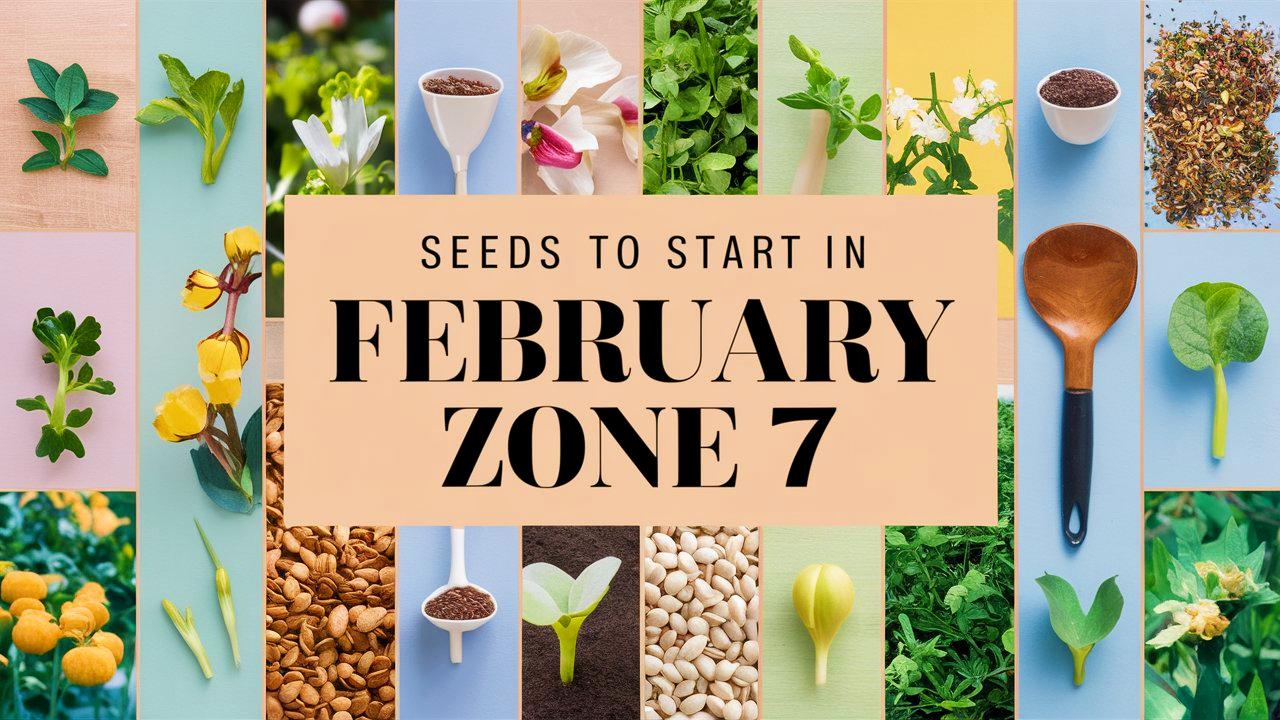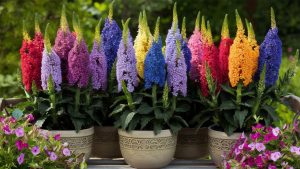As winter’s chill begins to give way to mild temperatures and longer days, February emerges as a key month for gardeners in USDA Zone 7. It’s an ideal time to kickstart your gardening endeavors by sowing seeds for a wide range of vegetables, flowers, and herbs.
This guide digs deep into the specific plants that can thrive when sown this month, paying special attention to temperature tolerance, planting techniques, and tips for success.
Vegetables To Plant
Starting your vegetable garden in February can establish a thriving ecosystem that yields nutritious and flavorful foods throughout the growing season. Here’s a closer look at ten vegetables ready for sowing.
Broccoli
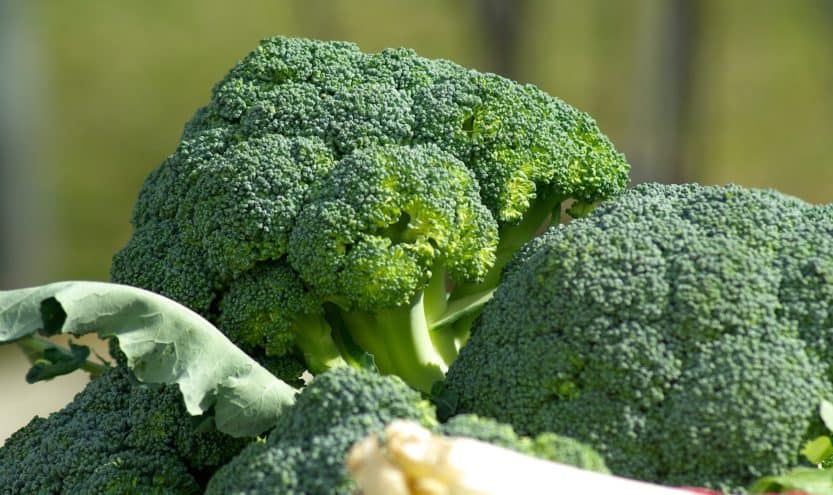
Broccoli is not just any vegetable; it’s a nutritional powerhouse, loaded with vitamins K and C, fiber, and even protein. For optimal growth, start broccoli seeds indoors 6-8 weeks before the last frost date in mid to late March for Zone 7. Maintain a soil temperature of 65°F to 75°F—this will enhance germination rates and produce robust seedlings.
Transplant the seedlings outdoors when they are 4-6 inches tall and ensure nighttime temperatures remain consistently above 20°F. Broccoli benefits significantly from fertile, well-amended soil, so consider mixing compost or well-rotted manure into your soil to boost nutrient levels. For a continuous harvest, stagger your planting every few weeks; you can plant a second batch at the end of February for an extended growing season. Be vigilant about pest management, particularly aphids and cabbage worms, which can threaten your crop.
Kale
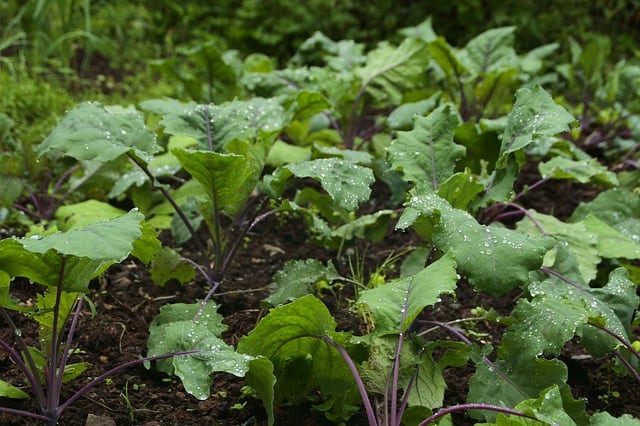
Kale offers a perfect balance of health benefits and culinary versatility. This leafy green ranks high on the list of nutritious vegetables, rich in antioxidants, vitamins, and minerals. Plant kale seeds directly in the garden or start them indoors 4-6 weeks before the last frost. Kale thrives in cooler weather (ideally 60°F to 70°F), embracing frost as a friend rather than a foe—light frost can actually enhance its sweetness.
When sowing, space seeds about 1 inch apart, later thinning seedlings to about 12 inches apart for mature plants. This layout allows air circulation and reduces the risk of disease. Regularly harvesting outer leaves encourages the plant to produce more, providing a seemingly endless supply of fresh greens. Kale is also remarkably adaptable, fitting seamlessly into salads, smoothies, or cooked dishes. To further boost your crop, consider planting companion plants like onions and garlic that deter pests.
Peas
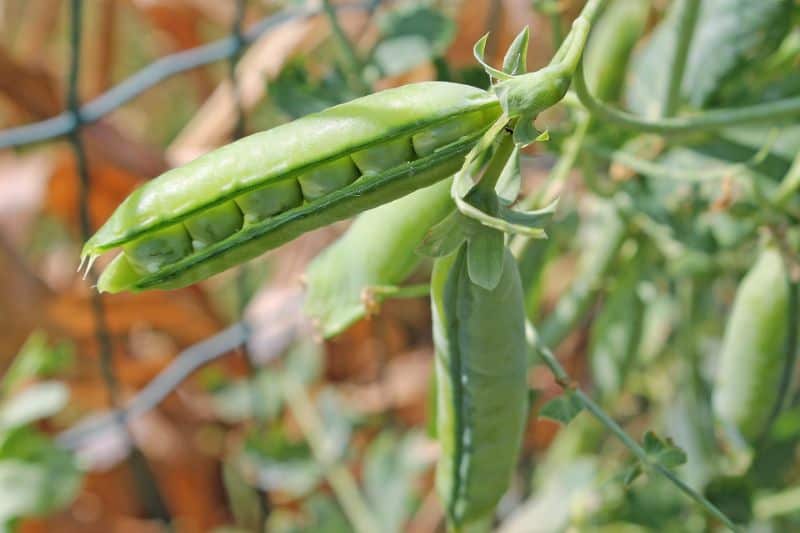
Peas are the quintessential heralds of spring, with their delicate sweetness that brings joy in every bite. This easy-growing vegetable thrives in cool temperatures, making February an excellent time to sow directly into the soil, provided that the garden is not waterlogged or frozen. Plant your pea seeds about 1-2 inches deep and 2 inches apart, ensuring a support structure is available for climbing varieties.
Peas thrive in temperatures ranging from 55°F to 70°F. Once established, they provide not just food but also enhance soil health by fixing nitrogen. After planting, keep the soil moisture consistent but not soggy. Regular harvesting is imperative: the more you pick, the more the plants produce. Peas can be eaten fresh, steamed, or added to a plethora of dishes, making them a valuable addition to your spring garden.
Spinach
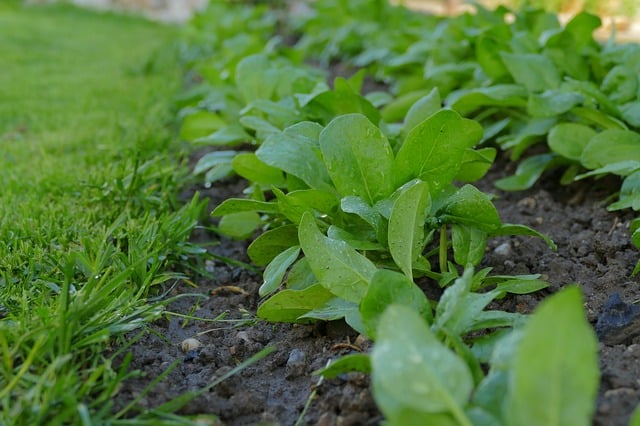
Spinach is a delightful leafy green that thrives in the cooler spring temperatures of Zone 7. As a highly nutritious vegetable rich in iron and vitamins, it deserves a prominent spot in your garden. In February, sow spinach seeds directly in well-drained soil that has been prepared with compost or fertilizer. Ideal soil temperatures for germination hover around 50°F to 70°F, which is precisely why early planting is favorable.
Sow seeds at a depth of ½ inch, with about 1 inch between them. Spinach can tolerate frost, and this sweetness develops further after exposure to cooler temperatures. For optimal growth, maintaining consistent soil moisture is key. Harvest spinach leaves regularly—taking the outer leaves allows the inner leaves to maintain growth. The versatility of spinach makes it suitable for salads, sautéing, and even smoothies.
Radishes
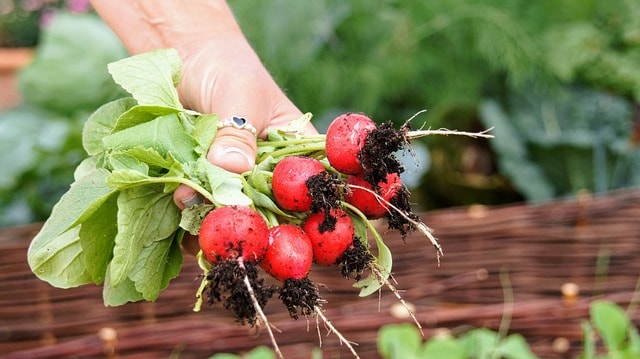
Radishes are the champions of fast farming, offering a fresh, crunchy bite in just about 25 days from seed to harvest. With temperatures ideally ranging between 50°F and 65°F, February is a prime time to sow radishes directly into loose, well-drained soil. Plant seeds at a depth of about ½ inch and space them roughly 1 inch apart.
Radishes thrive with little fuss and are ready to eat when they reach about 1 inch in diameter. Their crisp, peppery flavor enhances salads, sandwiches, and various dishes. Moreover, radishes are excellent for short-season gardeners, allowing growers to enjoy multiple successive harvests throughout the season. Keep soil moist but not waterlogged to ensure healthy growth and avoid splitting.
Carrots
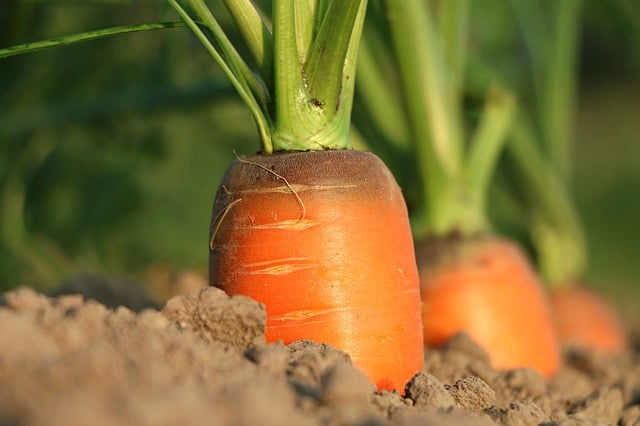
Carrots are beloved for their sweetness and crunch, making them a staple in many dishes. February is an excellent month to begin sowing carrot seeds directly into the garden. Start by ensuring the soil is loose and free of rocks to promote strong root development. Sow seeds about ¼ to ½ inch deep, spacing them 2-3 inches apart.
Carrots prefer cooler soil temperatures of around 50°F to 65°F for germination. Carrots take longer than other vegetables to reach maturity, typically around 70-80 days, but they provide magical rewards in the end. Regular thinning is essential for optimal spacing and growth. Carrots can be harvested once they attain a desirable size, and both the roots and the leaves can be used in cooking and salads.
Swiss Chard
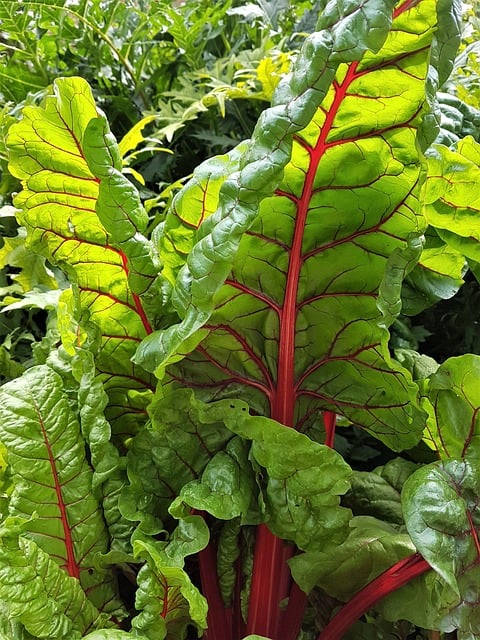
Swiss chard is a vibrant, multi-purpose leafy green that not only tastes great but also adds striking color to your garden with its brilliant stems. Sow Swiss chard seeds directly in your garden in late February, ensuring the soil temperature is between 50°F and 75°F. Plant seeds about 1 inch deep and allow for a distance of 6 inches between each seed, as they will become quite bushy.
This hardy green can withstand light frosts and provides continuous harvesting through spring and summer. You can cut only the outer leaves, encouraging new growth from the center. Beyond its culinary uses—which include sautéing, stewing, or adding to salads—Swiss chard boasts high nutritional value, packed with vitamins A and K.
Lettuce
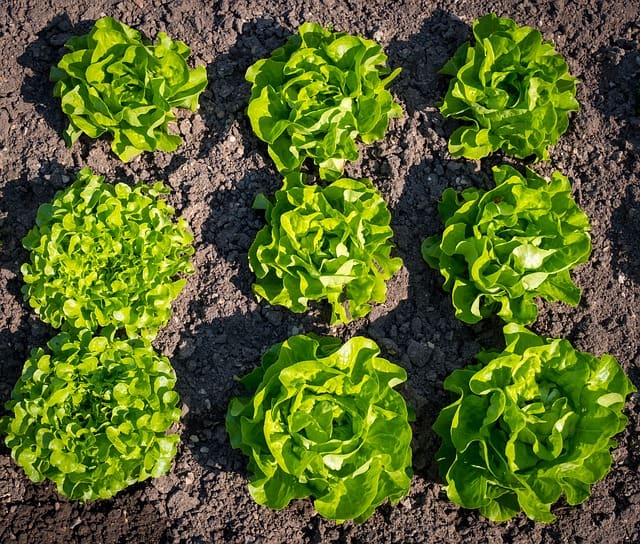
Lettuce is a garden staple that thrives in cooler weather, making it perfect for February planting in Zone 7. Start seeds indoors or directly in the garden, ideally 4-6 weeks before the last frost. Lettuce prefers temperatures between 60°F and 70°F, so ensuring good soil drainage will aid early growth. Sow seeds at a shallow depth of about ¼ inch, spacing them 1 inch apart.
With various types available—leafy, romaine, and butterhead—you can plant several varieties for a mix of flavors and textures. As the plants reach maturity, you can begin harvesting leaves gradually, enjoying fresh greens from your garden for salads and sandwiches. Keep an eye on moisture levels, as lettuce can wilt under excessive heat or drought conditions.
Cabbage
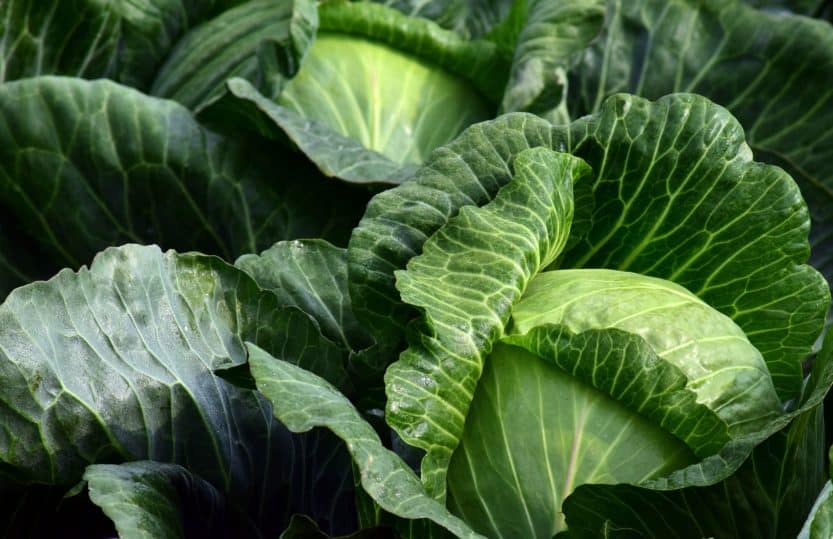
Cabbage is a robust vegetable that thrives well in cool climates and can be successfully grown in Zone 7 when planted in February. Start seeds indoors approximately 6-8 weeks before the last frost date. Cabbage seedlings prefer a soil temperature of around 70°F for optimal germination and robust growth. Once their height reaches about 4-6 inches, they can be transplanted outdoors, spaced 12-18 inches apart to accommodate their mature size.
Cabbage requires rich, fertile soil and consistent moisture for optimal growth. It finds its way into many dishes, both cooked and raw—think coleslaw, stir-fries, or as a hearty side dish. Monitoring for pests is crucial, as cabbage can attract aphids and cabbage worms. By using row covers or organic pesticides, you can maintain healthy cabbage crops.
Beets
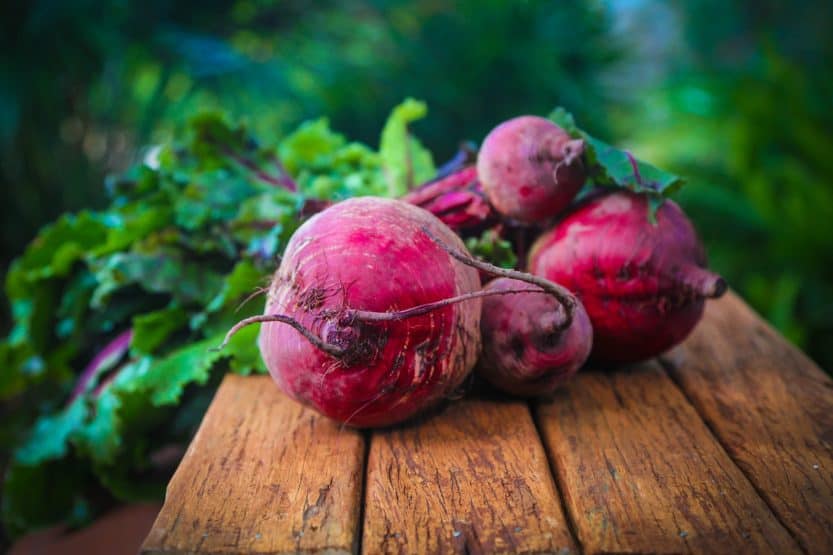
Beets are an underappreciated root vegetable packed with essential nutrients and flavor. In February, sow beet seeds directly into well-prepared soil—beets prefer cooler temperatures of around 50°F to 75°F for germination. Plant the seeds at a depth of ½ inch, spacing them 2-3 inches apart.
Beets thrive in fertile, loose soil to allow their roots to expand adequately. After germination and thinning, you can enjoy both beet greens and the roots—both are edible and nutritious. They can be roasted, pickled, or grated into salads, providing a burst of color to your dishes. Beets are also high in fiber, antioxidants, and various vitamins, making them a wholesome addition to your garden.
Flowers To Plant
Adding flowers to your garden in February enhances its beauty and provides essential habitats for pollinators. Here are ten flowers that thrive when planted this month.
Pansies
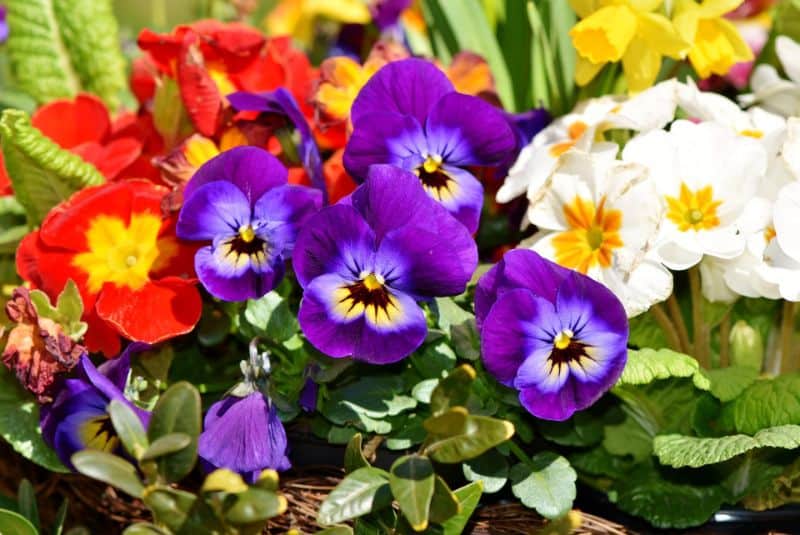
Pansies are a beloved choice for gardeners looking to introduce vibrant colors in early spring. These hardy annuals can handle cold temperatures and frosts, making a February sowing incredibly rewarding. Start pansy seeds indoors or plant them directly in well-prepped soil, ensuring temperatures stay between 50°F and 60°F for the best results.
With their vibrant hues and charming “face-like” patterns, pansies can elevate any garden space. Regular deadheading encourages continual blooming throughout spring, so be sure to remove wilted flowers. Pansies also enjoy well-drained, nutrient-rich soil and appreciate partial sun to thrive, making them a versatile choice for garden beds and containers.
Snapdragons
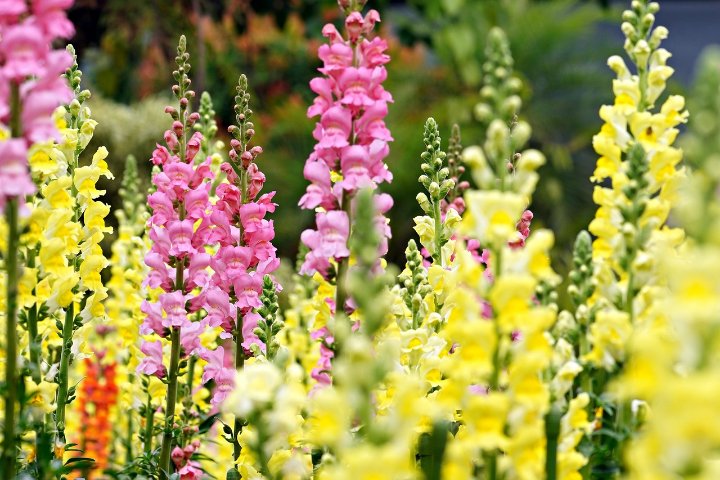
Snapdragons are known for their unique, tall flower spikes and rich colors, thriving in cooler temperatures. For the best results, start snapdragon seeds indoors in February, as this will provide you with a jumpstart before transplanting outside in spring after the frost. They prefer soil temperatures of 60°F to 70°F for germination and should be spaced 6-12 inches apart when planting.
Aside from their aesthetic appeal, snapdragons are fantastic for attracting hummingbirds and butterflies, enhancing the biodiversity in your garden. Their blooms can also be cut and used as beautiful bouquets, bringing the charm of your garden indoors. With some occasional deadheading, snapdragons will bloom generously for much of the spring and early summer.
Marigolds

Marigolds are bright, cheerful flowers that not only beautify gardens but also serve a critical role in pest management. Starting marigold seeds indoors in February offers a head start; these annuals prefer warmer soil but can withstand cooler temperatures. When transplanting marigolds outdoors after frost, space them 8-12 inches apart to allow for their bushy growth.
Their bright yellow, orange, and red blooms are not only eye-catching but also draw beneficial insects like bees and butterflies, contributing to your garden’s pollination efforts. Marigolds can significantly improve soil quality and deter pests, making them a gardener’s favorite. These flowers are also incredibly easy to grow, accommodating various soil types and conditions.
Sweet Peas
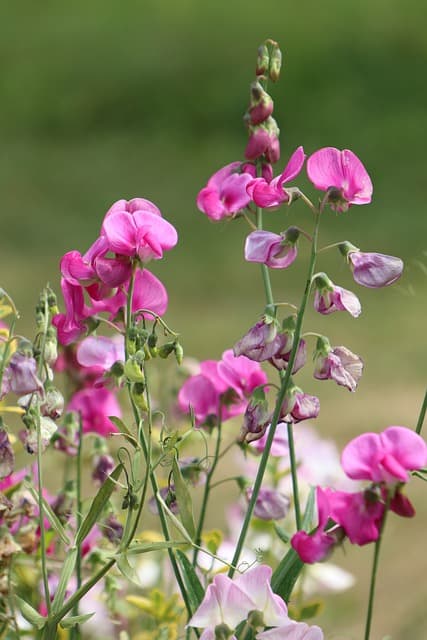
Sweet peas are beloved for their delicate appearance and enchanting fragrance. As a cool-season plant, sowing sweet pea seeds directly in the garden in February is an excellent choice for decorative gardening. They thrive in temperatures of 50°F to 65°F and should be spaced about 4-6 inches apart, providing a trellis for climbing.
With their enchanting blooms ranging from white to deep purple, sweet peas exude a lovely perfume, attracting pollinators to your garden. Regularly harvesting blossoms encourages more blooms, prolonging your enjoyment. Consider planting them near entrances or pathways where their fragrance can be fully appreciated, making your garden a sensory delight.
Zinnias
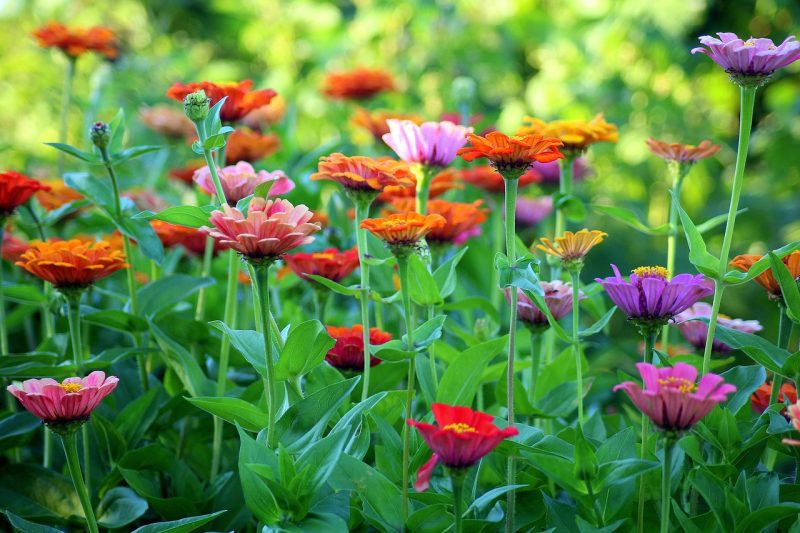
Zinnias bring unparalleled vibrancy and cheer into the garden. Though they are often started in late spring, you can begin zinnia seeds indoors as early as February for transplanting later. This flower prefers a warm climate for germination—ideally around 70°F to 80°F. When ready to plant outside, space zinnias about 12 inches apart for healthy growth.
These sun-loving flowers bloom from summer to fall, attracting butterflies and other pollinators to your garden while offering a riot of colors—from vibrant reds to soft pastels. Zinnias are remarkably resilient and thrive in almost any soil, requiring little maintenance. Cutting flowers will encourage further blooming, providing you with beautiful bouquets throughout the summer.
Petunias

Petunias are beloved among gardeners for their vivid blooms and trailing capabilities, making them ideal for containers, hanging baskets, or garden beds. Start petunias indoors in February, where they thrive in temperatures above 70°F for germination. Once nighttime temperatures are consistently warm, transplant them into well-drained soil spaced 12 inches apart.
These versatile flowers come in a range of colors, patterns, and petal shapes, rewarding gardeners with beauty throughout summer and into early fall. Regular deadheading promotes a longer blooming season and ample growth. Petunias also prefer sunny locations and can handle varying soil conditions, making them an excellent addition to any garden.
Cosmos
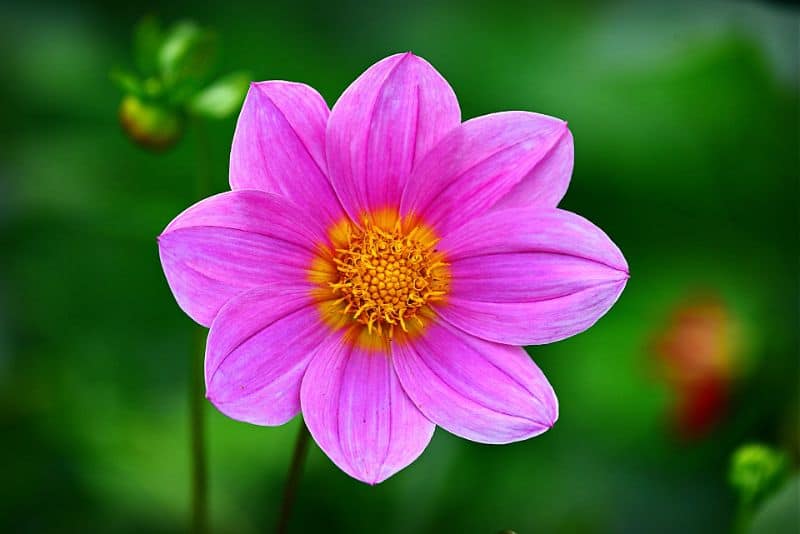
Cosmos are known for their delicate, feathery leaves and colorful daisy-like blooms. Sowing cosmos seeds in February can prepare your garden for a stunning display from late spring through fall. Cosmos thrive in various soil types, but they do best with well-draining, nutrient-rich soil in sunny locations. Sow seeds once the danger of frost has passed, spacing them 12 inches apart.
With their sturdy nature, cosmos will flourish with little attention while attracting butterflies and other pollinators. These flowers make for stunning cut arrangements, adding a vibrant touch to your home. Moreover, cosmos are drought-tolerant once established, making them a low-maintenance choice for gardeners.
Sunflowers
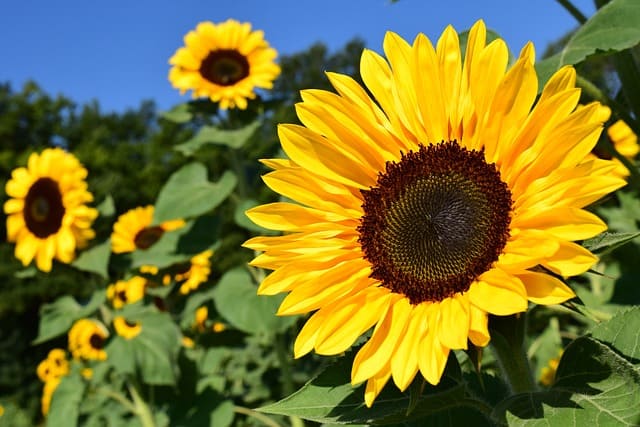
Sunflowers evoke warmth and happiness with their bright faces following the sun. Although February is generally early for direct sowing in the ground, you can start sunflower seeds indoors to ensure sky-high blooms ready soon after the last frost. These radiant flowers thrive in full sun and well-drained soil, with ideal germination temperatures around 70°F to 80°F.
Sunflowers come in various heights and colors, and they make great companions for gardens, providing shade and attracting bees. Space seeds about 6 inches apart to allow for optimal growth. Once matured, sunflowers serve as both a beautiful aesthetic and a food source for birds and humans alike. Enjoy the seeds as a healthy snack, or use them in cooking.
Begonias
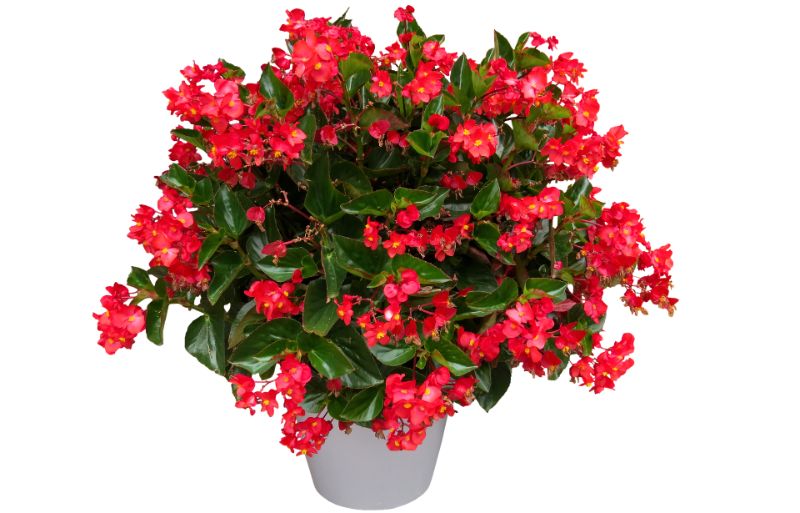
Begonias are ideal for adding texture and color to both shaded and sunny areas in your garden. Start begonias indoors in February, ensuring a warm environment (above 70°F) for optimal germination. Once the frost passes, you can transplant them outdoors, spacing them approximately 12 inches apart.
These flowers exhibit a unique beauty with their varied leaf shapes and sumptuous blooms, making them excellent for both landscape design and container gardening. Begonias enjoy rich, well-draining soil and will reward caregivers with vibrant flowers from spring to fall, adding striking color to your space. Their adaptability and ease of care make them a favorite among both novice and experienced gardeners.
Nigella (Love-in-a-Mist)

Nigella, often called Love-in-a-Mist, produces exquisite, ethereal blooms surrounded by lacy foliage, adding a touch of drama and beauty to any garden. February is the right time to sow these seeds directly in well-drained soil, as they prefer cooler temperatures for germination—around 60°F. Space seeds about 6 inches apart to allow for their growth.
Nigella not only enchants with its unique floral appearance but also serves a practical purpose. The seeds produced can be collected and used in cooking, providing a nutty, aromatic flavor akin to cumin. Additionally, its flowers attract beneficial insects, making it an integral part of a healthy garden ecosystem.
Herbs To Plant
Herbs are essential for any kitchen garden, elevating dishes with fresh flavors while providing various health benefits. Here is a detailed look at ten herbs you can plant in February.
Parsley
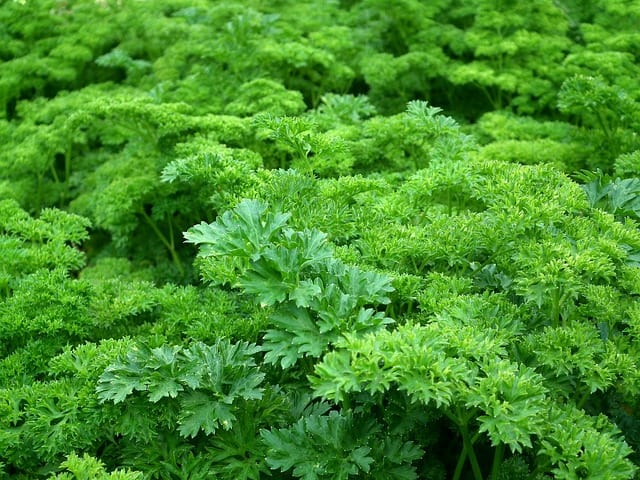
Parsley is an aromatic herb renowned for its culinary uses, packed with vitamins A, C, and K. Known as the “rockstar” of the garnish world, parsley can thrive in cool temperatures, making February an excellent time for sowing seeds directly in the garden. For optimal growth, maintain soil temperatures in the 60°F to 70°F range and ensure that the soil is moist but well-drained.
When sowing, space the seeds about 10-12 inches apart, and be patient; they can take a while to germinate. Regular harvesting encourages plants to produce new leaves, ensuring a continuous supply. Use fresh parsley in salads, sauces, or as a garnish for soups to enhance flavor and aesthetics. Parsley can also be dried for future use, ensuring your kitchen remains stocked with this versatile herb.
Cilantro

Cilantro, known as coriander when referred to in its seed form, is favored for its bright flavor and versatility in many cuisines. Sow cilantro seeds directly in the garden in February, and watch for quick germination in the cool air. Typically, cilantro thrives best in cooler temperatures, ideally between 50°F and 70°F.
When planting, space seeds about 2 inches apart, covering them lightly with soil. Cilantro can be harvested in stages—clip the outer leaves or cut entire plants once they reach about 6 inches in height. As cilantro flowers, it produces seeds (coriander), which can be harvested for future culinary use. This dual-purpose herb is perfect for salsas, garnishes, or even as an ingredient in marinades.
Chives

Chives are a perennial herb that brings a mild onion flavor to dishes, becoming a must-have in your herb garden. In February, chive seeds can be started indoors or sown directly in the ground if nighttime temperatures remain mild. Chives thrive in cool soil but prefer warmth for growth, making them perfect for early planting.
When sowing, space seeds about 6 inches apart and cover only lightly with soil. As a perennial, chives will return year after year, offering fresh leaves for culinary delight. You can harvest chives continuously; simply snip off what you need, allowing the plant to regenerate. Chives make a beautiful addition to salads or are delicious as a garnish on soups and other dishes.
Thyme

Thyme is a timeless aromatic herb known for its culinary versatility and medicinal properties. In February, sow thyme seeds indoors or direct-seed in your garden after frost. Thyme prefers well-drained soil and will flourish in temperature conditions ranging from 70°F upward for germination.
Space thyme plants about 12 inches apart to ensure ample sunlight and air circulation. Its robust flavor enhances many dishes, making it a staple herb in Mediterranean cooking. Thyme is also drought-tolerant and can perform well with minimal care once established. Regular harvesting encourages bushier growth, allowing you to enjoy fresh thyme throughout the growing season.
Oregano

Oregano is a hardy, perennial herb that brightens up dishes from pasta to pizza. Start oregano seeds indoors in February, where they can thrive, or wait until after the frost to direct sow. It enjoys well-drained soil and thrives in sunny locations, ideally germinating in temperatures around 70°F.
When planting, ensure to space seedlings at least 12 inches apart, allowing them to mature into bushy plants. Oregano is a must-have for Mediterranean cuisine, and its aromatic leaves can be harvested as needed throughout the season, enhancing a variety of dishes. Take care to prune and harvest regularly to encourage new, vibrant growth.
Basil
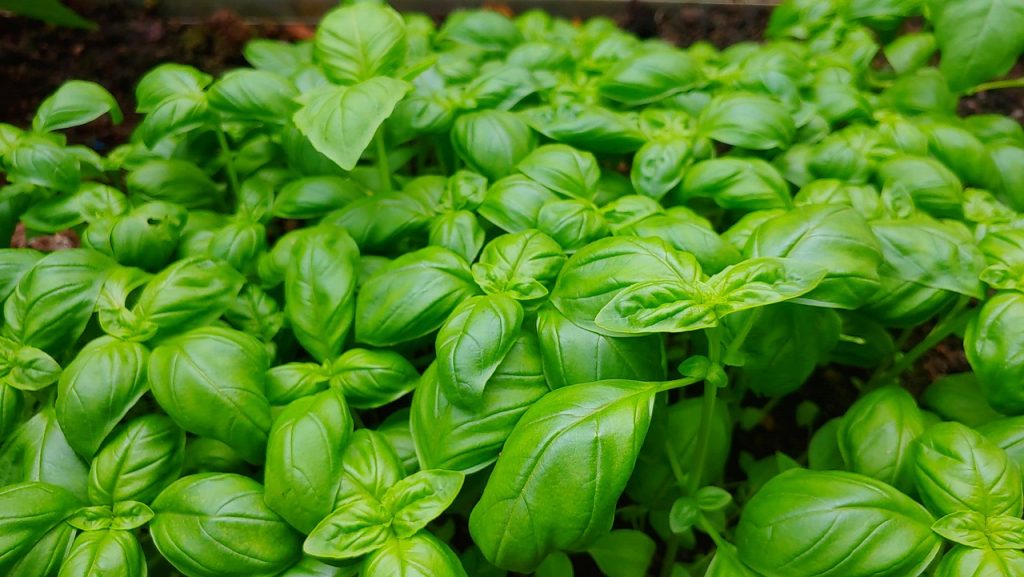
Basil is a staple herb that flourishes in summer months and is adored for its sweet, fragrant leaves, perfect for Italian cuisine. Begin by starting basil seeds indoors in February, nurturing them in warm conditions of 70°F to 90°F for successful germination. Transplant them outdoors after the last frost when temperatures consistently warm up.
When transplanting, space basil about 12 inches apart to promote air circulation and growth. Regular harvesting of leaves promotes bushier plants and encourages new growth. Fresh basil can elevate numerous dishes, from pesto to salads, and can even be dried or frozen for later use. The added aroma of basil not only enhances culinary experiences but is also known for its uplifting qualities.
Dill
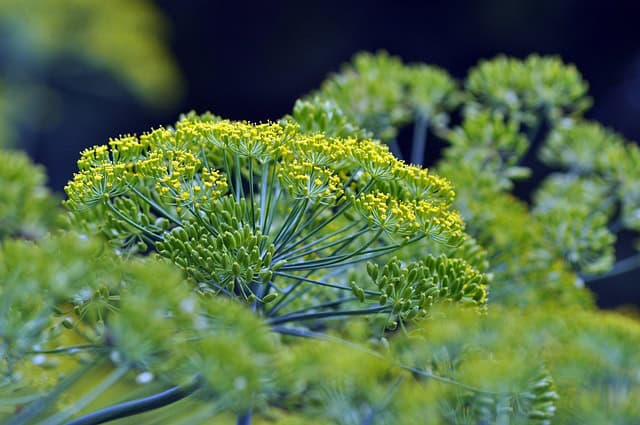
Dill is valued for its aromatic foliage and seeds, often enhancing the flavors of pickles and seafood dishes. In February, sow dill seeds directly into the garden; these herbs perform best in cooler temperatures of 60°F to 70°F. Space seeds approximately 1 inch apart in well-drained soil.
Dill exhibits a quick growth cycle, allowing for both leaf and seed harvesting within the growing season. Plucking young leaves offers a fresh addition to salads, sauces, and seasoning while leaving some plants to bolt for the flavorful seeds. Moreover, dill attracts beneficial insects such as ladybugs and hoverflies, making it an excellent companion plant in your garden.
Mint
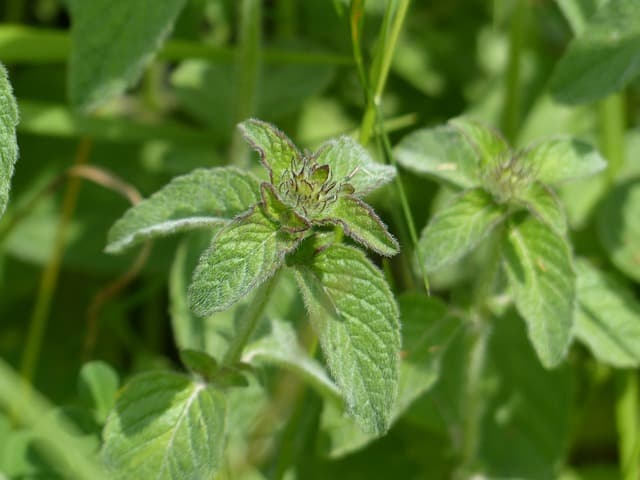
Mint is a vigorous perennial herb that brightens culinary creations with its refreshing flavor. Mint thrives in various conditions, making February a suitable time to plant in well-drained soil. You can sow mint seeds directly outdoors or start them in containers to control their vigorous growth.
With a preference for rich soil and partial sun, mint can spread quickly, so consider planting it in pots or designated areas in your garden. Regularly harvesting leaves encourages bushier growth and enhances flavor. Mint is incredibly versatile, lending itself perfectly to everything from teas to desserts and cocktails—its aroma alone makes it a favorite among gardeners.
Sage
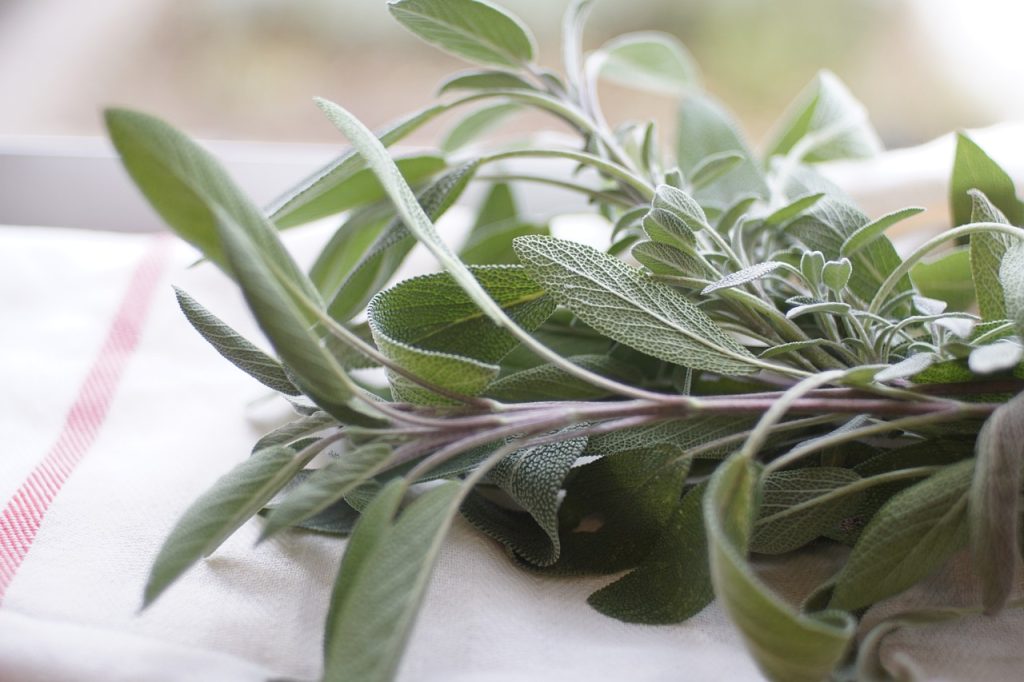
Sage, with its strong aroma and culinary importance, is a delightful addition to gardens. Start sage seeds indoors in February, favoring warm temperatures around 70°F for germination, or sow them directly in the garden post-frost. Space sage plants around 12-24 inches apart to accommodate their bushy nature.
Sage is wise to drought conditions and will thrive with minimal care once established. This herb adds depth to savory dishes and can be harvested regularly to prevent leggy growth. Beyond its culinary uses, sage is also a companion plant that deters pests, making it a valuable addition to your overall garden health.
Rosemary

Rosemary is an evergreen perennial that adds an aromatic touch to your garden while thriving in sunny locations. Sow rosemary seeds indoors in February; they prefer warm temperatures of at least 70°F for germination. Once established indoors and frost-free, rosemary plants can be transplanted outdoors, needing ample space—at least 12-24 inches apart.
Rosemary’s culinary uses are abundant, particularly in Mediterranean dishes, highlighting meats and vegetables. Regular snipping of the leaves encourages bushier growth. Additionally, rosemary is drought-resistant, making it easy to care for, and it also serves as a pollinator-friendly plant in your garden.


